If you’re like me, during the pandemic, every phone notification alert was jolting – inducing the feeling of flashing blue lights appearing in the rearview. I dreaded each ping because it was a stark reminder of the uneasiness the invisible virus created or worse, it might signal COVID-19 exposure.
Earlier today, my iPhone dinged with this notification. This time, however, it heralded great news related to these COVID-19 warnings.

Rejoice? Unfortunately, not so fast!
As we collectively breathe a sigh of relief at the close of the COVID-19 Public Health Emergency (PHE), we recognize that it’s more than just the end of a global crisis. It’s the beginning of a new phase, a return to some semblance of normalcy after years of turbulence and uncertainty.
However, this transition raises several questions, particularly for home health agencies and providers. During the pandemic, privacy rules and HIPAA security compliance rules were significantly relaxed. The end of the PHE means a return to stringent adherence and enforcement for violations.
Specifically, the Department of Health and Human Services (HHS) adopted lenient HIPAA rules that allowed healthcare providers to use various telehealth technologies to cater to their patients remotely, ensuring their safety and minimizing the risk of virus transmission. These amendments were outlined in the HHS telehealth policy website. But, as reported by Foley, on May 11, 2023, the official end of the PHE, HIPAA rules return to their pre-pandemic rigidity, meaning providers and home health agencies are again responsible for ensuring HIPAA compliance, safeguarding the privacy and security of their patient’s PHI. This behooves all providers and agencies to reassess the telehealth technologies they employed during the PHE to ensure they meet the restored security standards to protect patient health information (PHI).
However, the return to normalcy need not be a cause for alarm. With the right tools and resources, providers and organizations can meet the challenge of adapting to the changing regulatory landscape head-on. Innovative solutions designed to cater to these specific needs can help ease the transition, ensuring that providers can continue to offer quality care while adhering to the necessary regulations.
Some Hope on the Horizon
Rightfully, the stakeholders are concerned —- addressing all the compliance requirements is bound to be painful. Many of the popular platforms are now non-compliant.

Fortunately, this is where Skyscape comes into play. Skyscape’s comprehensive platform, Buzz, provides an all-in-one solution to navigate this transition seamlessly. We designed the platform to manage and secure patient data, ensuring compliance with HIPAA regulations. Its innovative features address the issues at hand, providing a secure, reliable, and efficient way for providers to handle patient information, schedule appointments, and manage care while adhering to the necessary privacy and security rules.
In a world still grappling with the aftermath of a pandemic, Skyscape’s Buzz platform offers home health agencies and providers an opportunity to continue their essential work without the fear of violating privacy and security regulations. It bridges the gap between the need for continued telehealth services and stringent security measures, ensuring that the quality of care remains uncompromised as we navigate this new dawn.
As we celebrate the end of the PHE and the return to normalcy, it’s essential to recognize and address the challenges that lie ahead. With Skyscape, these challenges can be seen not as hindrances but as opportunities for growth, innovation, and the continued provision of high-quality care. We are offering agencies a zero cost, immediate onboarding program to get started and experience the platform’s secure collaboration capabilities. Click to GET STARTED now.
Reference:
Telehealth, communication, and collaboration in a post-Public Health Emergency (PHE) world.
Healthcare providers and patients have come to rely on the PHE flexibility with telehealth and healthcare, so what does the end of PHE mean?
During PHE providers were allowed to use telehealth in good faith even if their platforms or software did not follow Health Insurance Portability and Accountability Act (HIPAA) rules. However, this ends on May 11, and the OCR will resume enforcement of penalties on providers for noncompliance with HIPAA rules for technology use. Ahead of the end of the PHE, OCR has provided clarification on how and the circumstances under which the HIPAA rules apply to telehealth².
PHE has ended and Healthcare providers need to ensure the technology and software they use is HIPAA compliant. Patients may find they need to have an inpatient visit for specific checkups or use a new telehealth platform.
Buzz® is a unified communication and collaboration platform designed for healthcare, that empowers healthcare teams to facilitate streamlined continuous case management in a HIPAA-secure environment. Buzz combines the power of document sharing and e-signatures, Skyscape’s trusted 400+ volume clinical library, Skyscape Lightning™ Plus our ChatGPT and communication channels including texts, dictation, private calls, audio, images, reports, file, and video sharing. We invite you to try out BUZZ.
RESOURCES:
